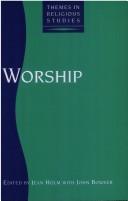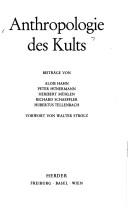| Listing 1 - 10 of 38 | << page >> |
Sort by
|
Book
ISBN: 1477320814 1477320792 1477320822 9781477320815 9781477320792 Year: 2020 Publisher: Austin
Abstract | Keywords | Export | Availability | Bookmark
 Loading...
Loading...Choose an application
- Reference Manager
- EndNote
- RefWorks (Direct export to RefWorks)
"After the Muslim conquest of Iran in the 7th century, devoted Zoroastrians emigrated to India, where the growing community came to be known as Parsis. This Parsi settlement had increasingly little contact with Iran over the succeeding centuries until the 19th century, when a romanticized notion of their ancestral homeland led them to reestablish contact with Iran and the remaining Zoroastrians there. The Parsis had thrived under British rule of India and so they were able to strengthen their ties to Iran with philanthropic work. Meanwhile, Iranians were coming to romanticize their own ancient history and saw the Parsis as a living embodiment of this history. The Iranian neo-classicism of the 20th century that helped to establish a sense of Iranian national identity is usually ascribed to European contact, but Marashi argues that this growing relationship with the Parsi community was an important element that influenced the development of modern-day Iran"--
Parsees --- Zoroastrians --- History. --- Religious adherents --- Parsis --- Fire-worshipers --- Iran
Book
ISBN: 9781107047976 1107047978 9781107256545 9781107661882 1107661889 1139862332 1139699288 113986324X 1107256542 1139861107 1139865382 1139871102 1139868950 9781139871105 9781139865388 9781139699280 9781139862332 9781139861106 9781139868952 9781139863247 Year: 2014 Publisher: New York
Abstract | Keywords | Export | Availability | Bookmark
 Loading...
Loading...Choose an application
- Reference Manager
- EndNote
- RefWorks (Direct export to RefWorks)
This book explores the legal culture of the Parsis, or Zoroastrians, an ethnoreligious community unusually invested in the colonial legal system of British India and Burma. Rather than trying to maintain collective autonomy and integrity by avoiding interaction with the state, the Parsis sank deep into the colonial legal system itself. From the late eighteenth century until India's independence in 1947, they became heavy users of colonial law, acting as lawyers, judges, litigants, lobbyists, and legislators. They de-Anglicized the law that governed them and enshrined in law their own distinctive models of the family and community by two routes: frequent intra-group litigation often managed by Parsi legal professionals in the areas of marriage, inheritance, religious trusts, and libel, and the creation of legislation that would become Parsi personal law. Other South Asian communities also turned to law, but none seems to have done so earlier or in more pronounced ways than the Parsis.
Parsees --- Legal status, laws, etc. --- History. --- Parsis --- Religious adherents --- Fire-worshipers --- Zoroastrians
Book

ISBN: 0271070684 9780271070681 9780271070643 0271070641 9780271066622 0271066628 9780271066639 0271066636 Year: 2021 Publisher: University Park, PA
Abstract | Keywords | Export | Availability | Bookmark
 Loading...
Loading...Choose an application
- Reference Manager
- EndNote
- RefWorks (Direct export to RefWorks)
"A collection of essays exploring musical sounds and worship practices within Pentecostal Charismatic Christianity. Combines ethnographic case studies with theoretical reflection informed by social science, musicological, religious studies, and theological approaches, resulting in a multidisciplinary analysis of a global phenomenon"--Provided by publisher.
Music --- Worship. --- Pentecostal churches. --- Cult --- Cultus --- Religion --- Theology, Practical --- Fire-worshipers --- Pentecostalism --- Religious aspects
Book
ISBN: 1946230251 0692774831 Year: 2016 Publisher: Claremont, California : Claremont Press,
Abstract | Keywords | Export | Availability | Bookmark
 Loading...
Loading...Choose an application
- Reference Manager
- EndNote
- RefWorks (Direct export to RefWorks)
Worship. --- Philosophical theology. --- Theology, Philosophical --- Philosophy and religion --- Theology, Doctrinal --- Cult --- Cultus --- Religion --- Theology, Practical --- Fire-worshipers

ISBN: 1855671115 9781855671119 Year: 1994 Publisher: London Pinter
Abstract | Keywords | Export | Availability | Bookmark
 Loading...
Loading...Choose an application
- Reference Manager
- EndNote
- RefWorks (Direct export to RefWorks)
Worship --- Comparative studies --- 264 --- 264 Liturgie --- Liturgie --- Cult --- Cultus --- Religion --- Theology, Practical --- Fire-worshipers --- Worship - Comparative studies
Book
ISBN: 100074065X 0367822660 9781000740653 9780367822668 9781000740912 1000740919 9781000740783 1000740781 0367410281 9780367410285 1032086084 Year: 2020 Publisher: London ; New York : Routledge,
Abstract | Keywords | Export | Availability | Bookmark
 Loading...
Loading...Choose an application
- Reference Manager
- EndNote
- RefWorks (Direct export to RefWorks)
This book investigates the entangled relations between people's daily worship practices and their umwelt in South India. Focusing on the practices of spirit (bta) worship in the coastal area of Karnataka, it examines the relationship between people and deities. Based on extensive fieldwork, this book links important anthropological theories on personhood, perspectives, transactions, and gift-exchanges together with the Gestaltkreis theory of Viktor von Weizscker. First, it examines the relations between bta worship and land tenure, matriliny, and hierarchy in the society. It then explores the reflexive relationship between modern law and current practices based on conventional law, before examining new developments in bta worship with the rise of mega-industries and environmental movements. Furthermore, this book sheds light on the struggles and endeavours of the people who create and recreate their relations with the realm of sacred wildness, as well as the formations and transformations of the umwelt in perpetual social-political transition. Modernity and Spirit Worship in India will be of interest to academics in the field of anthropology, religious studies and the dynamics of religion, and South Asian Culture and Society.
Worship. --- Spirits. --- India --- Religion. --- Invisible world --- Supernatural --- Fear of spirits --- Cult --- Cultus --- Religion --- Theology, Practical --- Fire-worshipers --- Regional studies

ISBN: 3451179091 9783451179099 Year: 1977 Publisher: Freiburg Herder
Abstract | Keywords | Export | Availability | Bookmark
 Loading...
Loading...Choose an application
- Reference Manager
- EndNote
- RefWorks (Direct export to RefWorks)
Worship --- Comparative studies --- 264 --- -#GROL:SEMI-264 --- Cult --- Cultus --- Religion --- Theology, Practical --- Fire-worshipers --- Liturgie --- -Addresses, essays, lectures --- 264 Liturgie --- #GROL:SEMI-264 --- Worship - Comparative studies
Book
ISBN: 1474219551 1472532589 1472528131 9781472532589 9781472528131 1472532546 9781472532541 9781474219556 Year: 2017 Publisher: [New York] : Bloomsbury Academic,
Abstract | Keywords | Export | Availability | Bookmark
 Loading...
Loading...Choose an application
- Reference Manager
- EndNote
- RefWorks (Direct export to RefWorks)
"This detailed study of fire metaphors provides a deep understanding of the purposeful work of metaphor in discourse. It analyses how and why fire metaphors are used in discourses of awe (mythology and religion) and authority (political speeches and media reports). Fire serves as a productive and salient lexical field for metaphors that seek to create awe and impose authority. These metaphors offer a rich linguistic and conceptual resource for authors of mythologies, theologies, literature, speeches and journalism, and provide insight into the rich interplay of thought, language and culture. This book explores the purpose of fire metaphors in genres ranging from the Norse sagas to religious texts, from Shakespeare to British and American political speeches. Ultimately it arrives at an understanding of the rhetorical work that metaphor accomplishes in communicating evaluations and ideologies."--Bloomsbury Publishing.
Metaphor. --- Parabole --- Figures of speech --- Reification --- Fire in literature. --- Fire --- Mythology. --- Religious aspects. --- Fire (in religion, folk-lore, etc.) --- Fire-worshipers
Book
ISBN: 9780367859169 9781003015765 100301576X 9781000296136 100029613X 1000296113 9781000296129 1000296121 9781000296112 9780367677503 0367859165 Year: 2020 Publisher: New York : Routledge,
Abstract | Keywords | Export | Availability | Bookmark
 Loading...
Loading...Choose an application
- Reference Manager
- EndNote
- RefWorks (Direct export to RefWorks)
"Caves and Worship in Ancient Greece brings together a series of stimulating chapters contributing to the archaeology, and our modern understanding of the character and importance of caves and cave sanctuaries in the first millennium BCE Mediterranean. Written by emerging and established archaeologists and researchers, the book employs a fascinating and wide range of approaches and methodologies to introduce, investigate and interpret material assemblages, many of which are introduced here for the first time. An introductory section explores the emergence and growth of caves as centres of cult and religion. The chapters then probe some of the meanings attached to materials such as bronze shields, terracotta figurines and ceramics, and those who created and used them. The authors use sensory and gender approaches, discuss the contribution of statistical analysis and the role of votive materials. At the heart of the volume is the examination of cave materials excavated on the Cycladic Islands and Crete, in Attika and on the western Greek mainland in Aitoloakarnania, on the Ionian Islands and in Southern Italy. This is a welcome volume for students of prehistoric and classical archaeology, enthusiasts of the history of caves, religion, ancient history, and anthropology"--
Worship. --- Caves --- Religious aspects. --- Greece --- Religion. --- Antiquities. --- Sacred caves --- Cult --- Cultus --- Religion --- Theology, Practical --- Fire-worshipers --- Worship --- Religious aspects --- E-books
Book
ISSN: 15709434 ISBN: 9789004176980 9004176985 9786612603327 9047430425 1282603329 9789047430421 Year: 2009 Volume: 124 Publisher: Leiden Boston Brill
Abstract | Keywords | Export | Availability | Bookmark
 Loading...
Loading...Choose an application
- Reference Manager
- EndNote
- RefWorks (Direct export to RefWorks)
The Qesse-ye Sanjān is the sole surviving account of the emigration of Zoroastrians from Iran to India to form the Parsi (‘Persian’) community. Written in Persian couplets in India in 1599 by a Zoroastrian priest, it is a work many know of, but few have actually read, let alone studied in depth. This book provides a romanised transcription from the oldest manuscripts, an elegant metrical translation, detailed commentary and, most importantly, a radical new theory of how such a text should be “read”, id est not as a historical chronical but as a charter of Zoroastrian identity, foundation myth and justification of the Parsi presence in India. The book fills a lacuna that has been acutely felt for a long time.
Parsees --- History --- Migrations --- Kayqubād, Bahman. --- History. --- Migrations. --- Kayqubād, Bahman. --- 295 --- Parsis --- Religious adherents --- Fire-worshipers --- Zoroastrians --- Perzische godsdiensten --- Kayqubad, Bahman. --- Zoroastriens --- Histoire --- Parsees - History --- Parsees - Migrations --- Kayqubād, Bahman. - Queṣṣe-ye Sanjān
| Listing 1 - 10 of 38 | << page >> |
Sort by
|

 Search
Search Feedback
Feedback About UniCat
About UniCat  Help
Help News
News